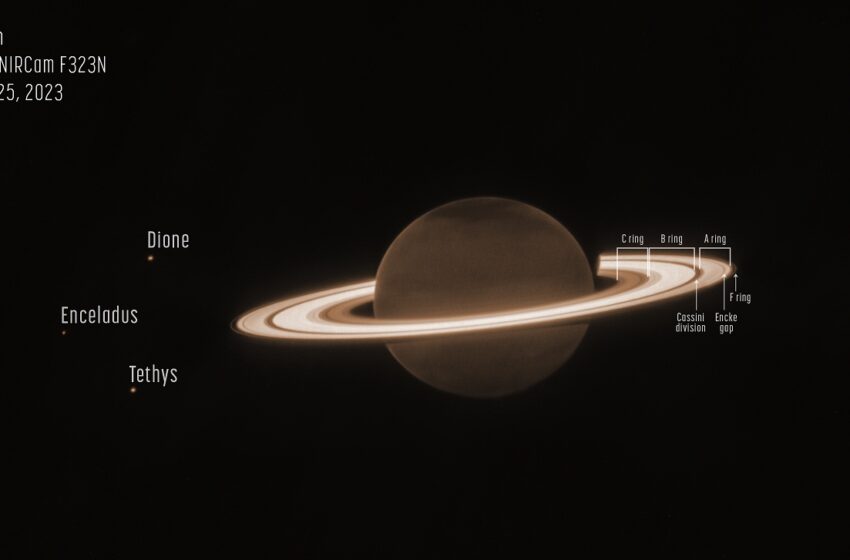
New image from NASA’s Webb Telescope reveals Saturn’s iconic rings
San Francisco, July 1 (IANS) Researchers using NASA’s James Webb Space Telescope have revealed a new image of Saturn and its rings which seem to glow eerily in the infrared picture, plus it unveiled unexpected features in Saturn’s atmosphere.
“On June 25, 2023, NASA’s James Webb Space Telescope turned to famed ringed world Saturn for its first near-infrared observations of the planet. The initial imagery from Webb’s NIRCam (Near-Infrared Camera) is already fascinating researchers,” Thaddeus Cesari, Strategic Communications Specialist at NASA’s Goddard Space Flight Center, wrote in a blogpost on Friday.
“Saturn itself appears extremely dark at this infrared wavelength observed by the telescope, as methane gas absorbs almost all of the sunlight falling on the atmosphere. However, the icy rings stay relatively bright, leading to the unusual appearance of Saturn in the Webb image,” he added.
Moreover, the space agency said that the new image of Saturn clearly showed the details within the planet’s ring system, along with several of the planet’s moons — Dione, Enceladus, and Tethys.
“Additional deeper exposures will allow the team to probe some of the planet’s fainter rings, not visible in this image, including the thin G ring and the diffuse E ring,” the space agency added.
Saturn’s rings are made up of a variety of rocky and icy fragments ranging in size from a grain of sand to a few as large as mountains on Earth.
Saturn’s atmosphere also showed surprising and unexpected detail.
According to NASA, it is the first time that the planet’s atmosphere has been observed with this clarity at this wavelength (3.23 microns), which is unique to Webb.
“The large, dark, diffuse structures in the northern hemisphere do not follow the planet’s lines of latitude, so this image is lacking the familiar striped appearance that is typically seen from Saturn’s deeper atmospheric layers,” the space agency said.
The image was taken as part of Webb Guaranteed Time Observation Programme 1247.
